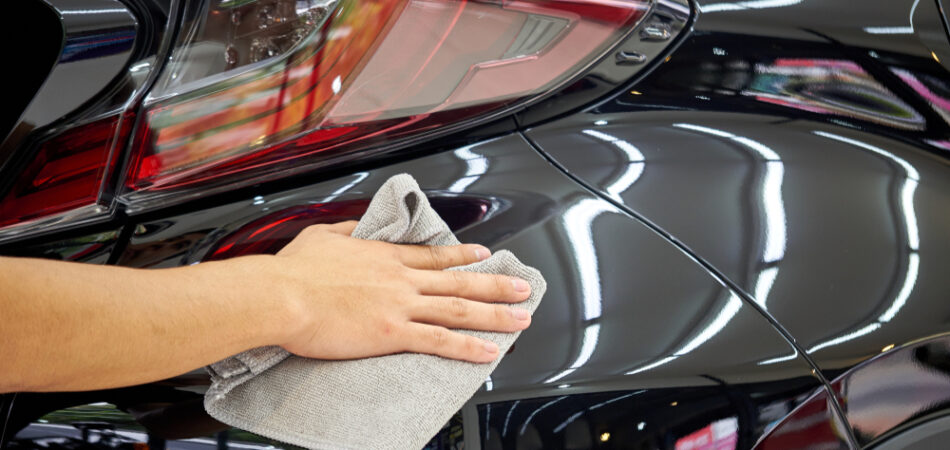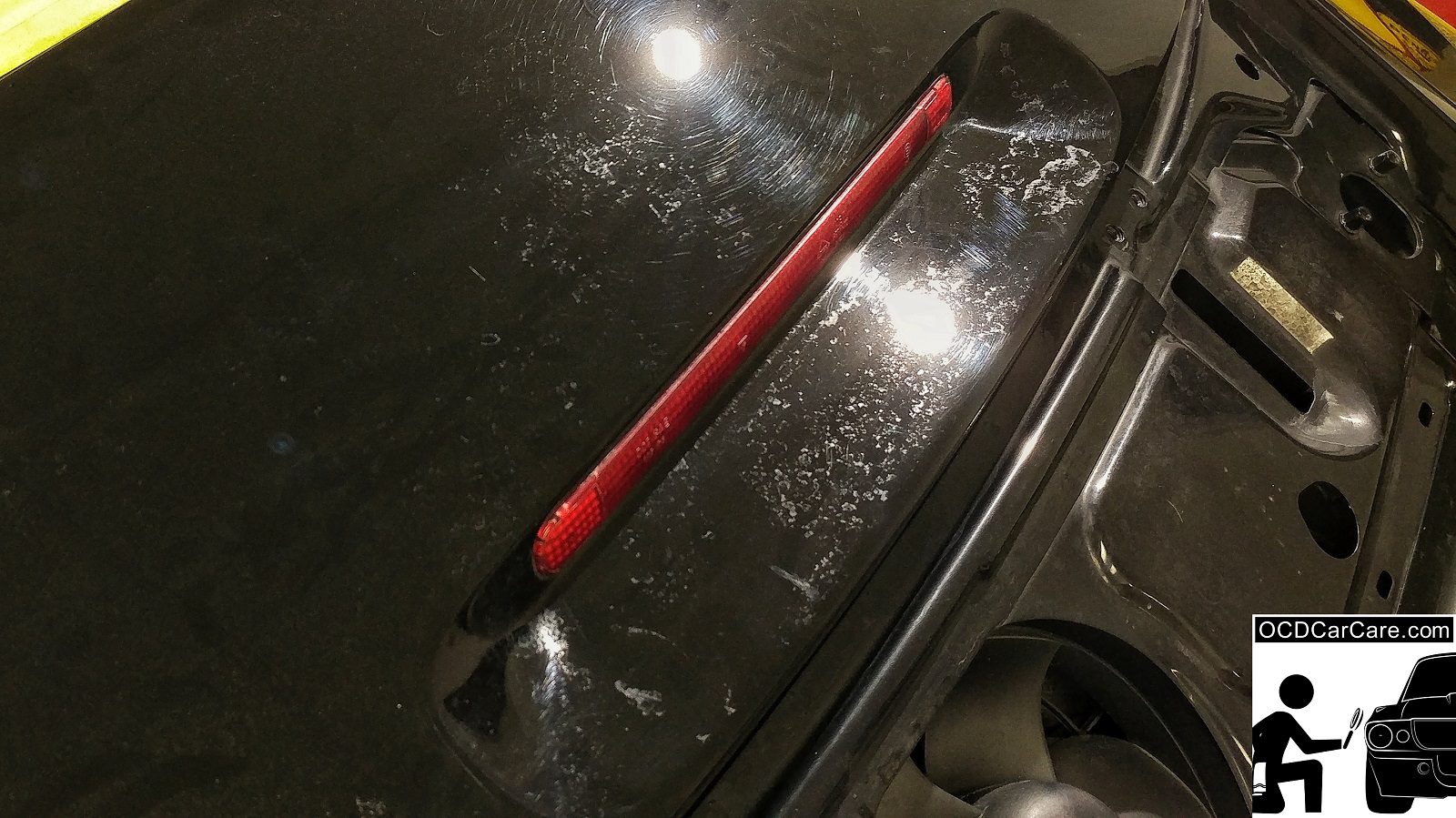Why Ceramic Coating Is Essential for Maintaining Your Car’s Paint
Why Ceramic Coating Is Essential for Maintaining Your Car’s Paint
Blog Article
Exactly How Ceramic Layer Safeguards Your Car's Paint and Maintains It Looking New
Ceramic layer has emerged as an advanced option for auto paint security, supplying an awesome obstacle versus the components. By developing a hydrophobic layer that bonds with the car's existing surface, this sophisticated innovation not only pushes back water yet additionally guards against ecological impurities and harmful UV rays. The result is a considerable decrease in paint deterioration and an enduring aesthetic charm. Nonetheless, comprehending the ins and outs of exactly how this process functions and the benefits it supplies can considerably affect your automobile upkeep strategy. What exists underneath the surface of this innovative strategy?
What Is Ceramic Coating?

When applied correctly, ceramic layers develop a semi-permanent bond with the surface area of the car, supplying exceptional protection against UV rays, chemical discolorations, and minor scratches - ceramic coating. Unlike typical wax or sealants that may put on off within months, ceramic coverings can last for several years, depending on the product and upkeep
Once the covering is applied, it cures and hardens, resulting in a hydrophobic surface that fends off water, grime, and dust. Ceramic covering is increasingly favored by car enthusiasts and professionals seeking durable paint defense.
Advantages of Ceramic Finishing
Why should automobile owners take into consideration spending in ceramic finishing? The benefits of ceramic layer prolong much beyond plain aesthetics, providing substantial security and long life for a car's paintwork.
In addition, ceramic coverings provide a durable guard versus UV rays, which can create paint to oxidize and fade gradually. This safety layer helps keep the vibrancy and gloss of the lorry's color, guaranteeing it looks brand-new for years. Ceramic coatings are understood for their toughness; they can last numerous years with proper maintenance, making them a cost-effective investment in the long run (ceramic coating).
One more substantial advantage is the convenience of upkeep they offer. With a ceramic-coated surface, minor scratches and swirl marks are less likely to take place, and when they do, they are easier to buff out. Overall, the investment in ceramic finishing not only enhances the visual appeal of a car however likewise offers enduring security that can conserve cars and truck proprietors money and time.
How Ceramic Finish Functions
Comprehending exactly how ceramic finishing works is important for auto proprietors considering this safety option for their car's paint. Ceramic finishings are made up of innovative nanotechnology that develops a resilient, protective layer over the surface of the car's paint. When applied, these fluid polymers bond chemically with the manufacturing facility paint, producing a strong, hydrophobic layer that pushes back water, dirt, and other contaminants.
The key element in ceramic coatings is silicon dioxide (SiO2), which provides the coating's solidity and resistance to UV chemicals, scrapes, and rays. This molecular bonding develops a safety shield that is dramatically harder than conventional wax or sealants, using lasting protection. The hydrophobic nature of the coating suggests that water grains up and rolls off the surface, taking dust and grime with it, therefore making the automobile simpler to cleanse.

Application Process of Ceramic Finish
The application process of ceramic finish requires careful prep work and attention to information to ensure ideal results. The car has to undergo a complete cleaning to get rid of dirt, crud, and contaminants. This step commonly includes a clay bar treatment to get rid of ingrained particles that could jeopardize the layer's adhesion.
Adhering to the cleaning, a comprehensive evaluation of the paint surface is vital. Any existing imperfections, such as scratches or swirl marks, ought to be attended to with sprucing up. This makes sure a smooth and reflective surface area, enhancing the last appearance of the ceramic coating.
Once the paint is prepared, the ceramic finish is used in a regulated environment to protect against dust and my explanation debris from contaminating Find Out More the surface. Using a specialized applicator, the finishing is uniformly dispersed in areas, enabling correct bonding with the paint. It is vital to follow the manufacturer's guidelines regarding curing times and environmental problems throughout application.
After the application, a curing period is necessary for the coating to achieve its complete protective buildings. This procedure can vary in duration based on the details item made use of, yet it is crucial for accomplishing the desired resilience and longevity of the ceramic finishing.
Maintenance Tips for Ceramic Covering
Keeping a ceramic finishing is necessary for protecting its protective properties and making certain the long life of your automobile's outside. Prevent automated automobile cleans, as their harsh chemicals and brushes can degrade the finish.
After cleaning, rinse completely and dry out the automobile with a tidy microfiber towel to avoid water areas. It's recommended to execute upkeep washes every two weeks to maintain the covering in great problem.
Additionally, take into consideration applying a specialized ceramic coating booster or spray sealant every few months. These items improve the hydrophobic residential or commercial properties and include an added layer of protection.
Examine your automobile regularly for any type of impurities such as tree More Help sap, bird droppings, or roadway tar, and remove them quickly utilizing a clay bar if needed. Park your car in a garage or use a vehicle cover to reduce exposure to severe environmental aspects. ceramic coating. By adhering to these upkeep ideas, you can make sure that your ceramic layer continues to be reliable and your car retains its showroom sparkle
Conclusion
Finally, ceramic layer works as a necessary protective measure for auto paint, using many benefits such as enhanced longevity and resistance to ecological risks. The innovative chemical bonding process guarantees a long-lasting guard against impurities, UV rays, and oxidation, consequently preserving the lorry's visual appeal. Correct application and maintenance are essential for making the most of the performance of ceramic finishings, ultimately adding to a car's long life and maintaining a showroom-quality coating over time.
Ceramic layer is a sophisticated protective remedy designed to protect the look and enhance of vehicle paint. Ceramic coating is progressively preferred by car enthusiasts and experts looking for lasting paint security.
Recognizing just how ceramic layer works is necessary for vehicle proprietors considering this safety solution for their automobile's paint. Ceramic coatings are composed of sophisticated nanotechnology that creates a durable, protective layer over the surface area of the vehicle's paint.The main part in ceramic coatings is silicon dioxide (SiO2), which offers the finishing's hardness and resistance to UV rays, chemicals, and scrapes.
Report this page